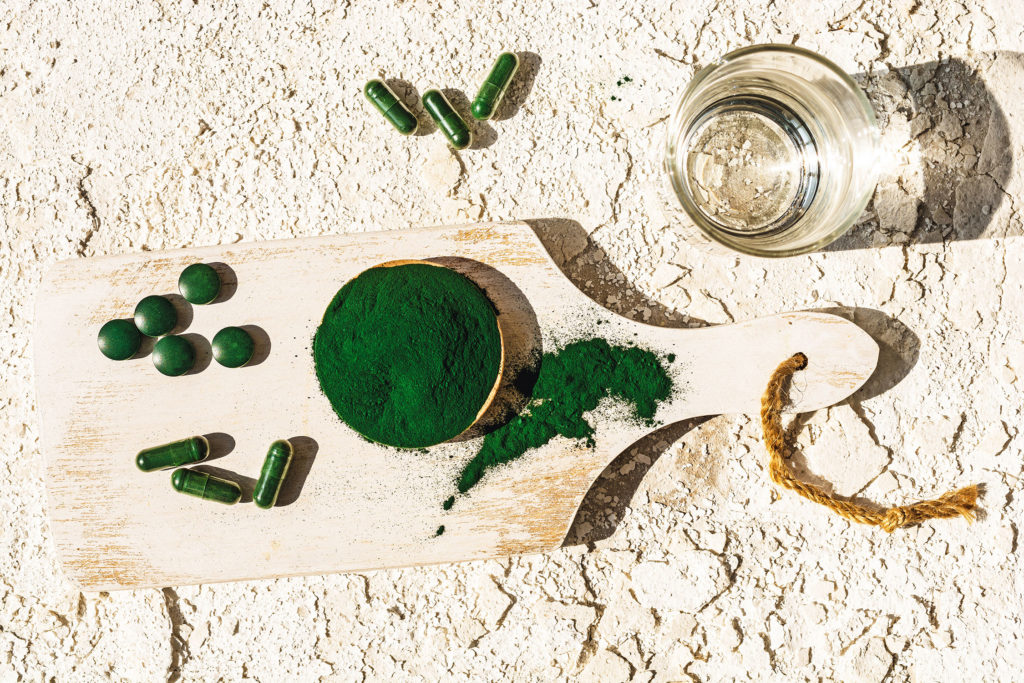
These Are the Only Wellness Trends You Need to Know About This Year
Would you add any to your routine?

It’s always interesting to take a look at wellness trends and the evolution of them. Remember when it seemed like everyone was obsessed with activated charcoal and it was in practically everything, from soaps and toothpastes to smoothies and snacks? Or what about when jade eggs and vaginal steaming made their way into everyday conversation? And while those trends might not be for everyone, I do appreciate how other “trends” have become more mainstream and have stayed that way. For example, many of us have been more aware of our mental wellbeing and there seems to be more support out there for people who are prioritizing their mental health. I hope that “trend” never goes away.
So when it comes to wellness trends, they can be surprising, a little out there, or much-needed (or a mix of the above). And since one’s wellness journey is a personal experience, it can be exciting to parse out the trends for yourself and see which ones are a good fit for your own lifestyle. For this year’s predictions, the team at wellness brands Mindbody and ClassPass pulled together a list of the most important ones they’re seeing right now. They surveyed over 17,000 Americans to see how their relationships with wellness continue to evolve. Some of the results were surprising and some were just a continuation of last year’s trends.
“This year’s trends include components from last year’s trends and have further evolved into the version they are now,” explains Margo Badzioch, Market Research Lead at Mindbody and a certified intimacy and wellness coach for the Mindbody and ClassPass Wellness Council. “For example, last year the top reason for working out was to feel better mentally and this year the main reason is to live a long and healthy life. Feeling better mentally is still one of the top reasons consumers exercises—it has become the norm to exercise for this reason. Consumers are looking not only to live a long life, but they also want to thrive, and mental health is a big part of the equation.”

Carol Yepes/Getty Images
Another trend that carried on from previous years? People still care about their immunity. In fact, many people are incorporating functional mushrooms into their supplement routine to boost it. As for interesting findings, Badzioch says that the level of engagement across all types of wellness aspects was high among millennial men. “Men overall and especially millennial men are not only more likely to engage in various fitness activities, they are also more likely to embrace a more natural lifestyle (i.e. growing their own food, choosing holistic remedies and supplements, aiming to become more self-reliant) including taking adaptogenic mushrooms or nootropics, and to say that community is a very important part of wellness experiences,” she says.
But the most exciting thing of all from the survey is further proof that there is truly a wide variety of wellness tools and services so that everyone can forge their own path to wellness, Badzioch says. And since people are more open about their health struggles (with things like mental health, fertility, and menopause), this can open the door to even more resources and tools. “Of course, that can create oversaturation in the market with information and tools or services as businesses want a piece of the market share,” she explains. “The quality of wellness products and services might be therefore questionable in some instances. That’s why people need to be more discerning about the products and services they engage in and who they learn and buy from. My suggestion is to learn and buy from reputable sources and to use your own judgement—learn to trust your own guidance in making the right selection for yourself and take your wellness journey into your own hands.”
Top 5 Wellness Trends of 2023
1. The Rise of the Wellness Collective
People are looking for a community and connection. The survey found that 43% of all consumers think community is a very important part of wellness experiences—in fact, men are more likely to say this than women. So people are looking for a gym, fitness class, or wellness studio that offers that feeling of connectedness and where people can socialize. “The way fitness and wellness establishments can provide this for consumers is through designating spaces for consumers to congregate and socialize, creating social events, or offering services in a more communal setting—anything interactive to bring people together,” Badzioch says.
The “wellness collective” trend isn’t too surprising to us—we just covered the rise of social wellness clubs like Heimat or Remedy Place in Los Angeles.
2. Going Back to Our Roots
The survey found that many people want to reconnect with nature: “Nearly 40% of Americans say they’re embracing a more natural lifestyle, with men more likely than women to grow their own food, choose holistic remedies and supplements, and aim to become more self-reliant.” Women are also more interested in “clean” beauty, trying natural products or treatments. And in general, consumers are open to reducing stress, improving cognitive function, and improving their wellbeing through plants and herbs (think: adaptogens, mushrooms, and nootropics).
Of course, reconnecting with nature doesn’t just mean opting for natural products, it also means getting out in nature. The survey found that nearly 40% of respondents say they spend time outside to support their wellbeing.

Aniko Hobel/Getty Images
3. The Year of the Woman
The survey found that, “American women are tapping into their feminine power like never before.” One way they’re doing that is by frequenting women-only gyms or fitness studios. Some examples of wellness and beauty spots in the West that Badzioch recommends include Women’s Power House Boxing, MNT Studio, and Beverly Hills Lashes in California; Total Body Wellness in Denver.
The feminine power trend also extends to periods and sexual wellness. Women are more comfortable talking about their periods, especially when discussing cycle syncing or aligning their lifestyle (diet, exercise, etc.) to the stages of their menstrual cycles. On the sexual wellness front, women are taking control and improving their sexual fulfillment through enhancement therapies, coaching, and workshops.
4. Functional Fitness for a Longer, More Fulfilled Life
In welcome news, people are less concerned with losing weight and more concerned with trying to live longer—a third of respondents said they exercise because they want to live a long and healthy life. There is an emphasis on functional fitness, which is a type of strength training that prepares the body for everyday activities, so you’ll do things like squats, bends, and lunges. If you’re looking for gyms or studios that offer these types of classes, Badzioch says F45 Training has multiple locations throughout the West, along with Pure Function Fitness Center in Los Angeles.
People are are also realizing the importance of workout recovery, with 47% of Americans saying things like stretching and restorative yoga are important to them. A third of respondents are interested in trying ice baths and a quarter practice biohacking.
5. The Wellness Generation
Gen Z and millennials are leading the charge here—the survey found that they engage in wellness more than their other generational counterparts. They spend the most on fitness, salon, spa, and wellness services; they’re most likely to work out daily and eat the recommended servings of fruits and veggies; they prioritize their mental wellbeing; and they’re most interested in the community aspect of wellness.
These generations also have expectations for wellness in the workplace. Many of them believe wellness perks or benefits are big factors when choosing an employer.
Read the Current Issue Here!
Get one year of Sunset—and all kinds of bonuses—for just $29.95. Subscribe now!
